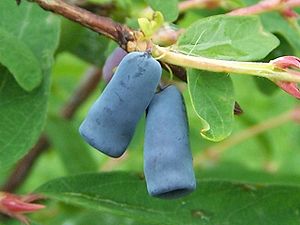Difference between revisions of "Lonicera caerulea"
Jump to navigation
Jump to search
m (1 revision: Lonicera 3 species) |
(cut down) |
||
| Line 18: | Line 18: | ||
|accessdate=18 May 2016}}</ref> | |accessdate=18 May 2016}}</ref> | ||
}} | }} | ||
| − | |||
| − | |||
| − | |||
| − | |||
| − | |||
| − | |||
| − | |||
| − | |||
| − | |||
| − | |||
| − | |||
| − | |||
| − | |||
| − | |||
| − | |||
| − | |||
| − | |||
| − | |||
| − | |||
| − | |||
| − | |||
| − | |||
| − | |||
| − | |||
| − | |||
| − | |||
| − | |||
| − | |||
| − | |||
| − | |||
| − | |||
| − | |||
| − | |||
| − | |||
| − | |||
| − | |||
| − | |||
| − | |||
| − | |||
| − | |||
| − | |||
| − | |||
| − | |||
| − | |||
| − | |||
| − | |||
| − | |||
| − | |||
| − | |||
| − | |||
| − | |||
| − | |||
| − | |||
| − | |||
| − | |||
| − | |||
| − | |||
| − | |||
| − | |||
| − | |||
| − | |||
| − | |||
| − | |||
| − | |||
| − | |||
| − | |||
| − | |||
| − | |||
| − | |||
| − | |||
| − | |||
| − | |||
==References== | ==References== | ||
{{Reflist|30em}} | {{Reflist|30em}} | ||
| − | + | [[Category:Caprifoliaceae]] | |
| − | + | [[Category:Plants for Keenan to eat]] | |
| − | |||
| − | |||
| − | |||
| − | |||
| − | [[Category: | ||
| − | [[Category:Plants | ||
| − | |||
Latest revision as of 00:47, 4 September 2018
| Lonicera caerulea | |
|---|---|

| |
| Scientific classification | |
| Kingdom: | Plantae |
| Clade: | Angiosperms |
| Clade: | Eudicots |
| Clade: | Asterids |
| Order: | Dipsacales |
| Family: | Caprifoliaceae |
| Genus: | Lonicera |
| Species: | L. caerulea
|
| Binomial name | |
| Lonicera caerulea | |
| Synonyms[1] | |
| |
References
- ↑ The Plant List: A Working List of All Plant Species; Family Caprifoliaceae, Genus Lonicera by Species, The Plant List, Version 1, Royal Botanic Garden-Kew and Missouri Botanical Garden, 2010, retrieved 18 May 2016